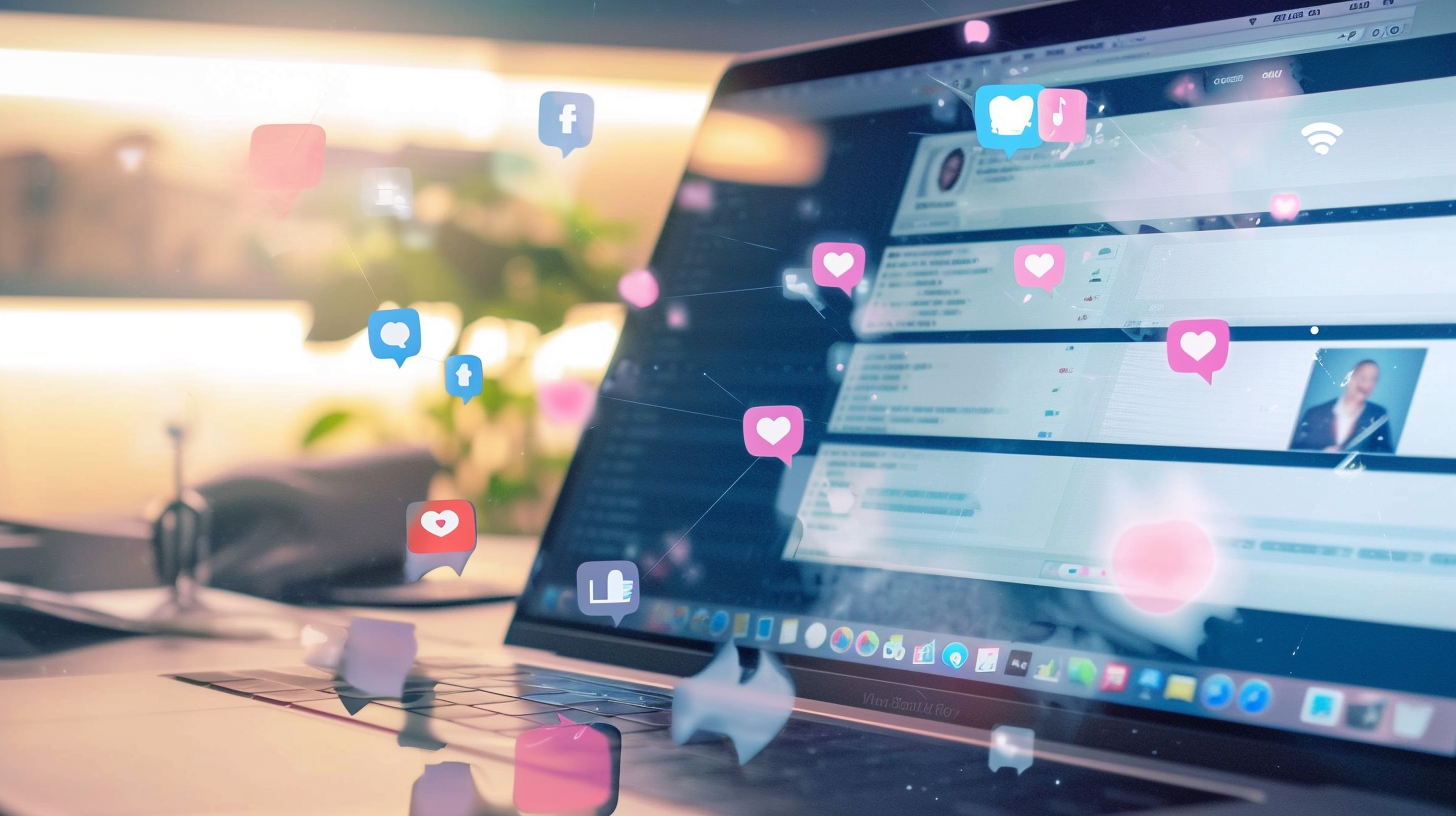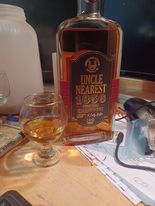The advancement of the digital age with its Artificial Intelligence has itself created nothing short of a dual and synthetic world. There are two worlds now; the world that is genuine, and a world that is formed and dependent upon technology and filled with digital assets and synthetic products. This alone has probably had far more impact on our culture than any other single factor of what I call the Synthetic Revolution. The outcome of this Synthetic Revolution is everywhere we look, if we bothered to take notice of it. What has happened to authenticity? Today, there is pushback, and for good reason. Pour yourself a dram and have a sip while I explain.

Did it start with plastic?
As a society we have accepted and welcomed advancements in technology and the resulting synthetic products. We perceive that they improve our quality of life and in many cases can be more efficient and cost effective. In the modern era, a “Synthetic Revolution” might have started with the horse being replaced by the steam engine and the automobile. No one except the buggy whip salesmen complained much about that, and who would have cared to listen to them? The widespread introduction of the use of plastic might have been the signal for the next step. Once consumer goods were packaged in paper, paperboard, steel, aluminum, wood, and glass. Almost overnight, the majority of these consumables were put into plastic, starting about 1970. It was a practical decision to do so; plastic was certainly cheaper, provided better protection of the contents, and was much lighter. It did not break or dent and could theoretically be recycled. Over the next three decades, plastic packaging became the standard for most consumer packaging.
Was this move to plastic “bad?” No, not in itself. But in a very subtle way, plastic–a new synthetic product–has played a big role the Synthetic Revolution I’m talking about. The everyday tactile connection people had with paper, glass, and metal (more “authentic” and traditional materials) was replaced by a new synthetic product which had no previous connection to any culture or human history.
Even the method of our commerce went from “paper to plastic” as we now use plastic cards embossed with our bank account numbers on them for payments instead of paper money and metal coins. It was a welcomed convenience to be able to carry a single card rather than tote around a wad of paper currency and a pound of loose change.

A few other salient examples today include:
Synthetic gasoline (ethanol) is touted as helping to reduce emissions. Because it is corn-based, it supports farmers. Synthetic motor oils provide better performance than natural in most cases.
In the medical field, synthetic skin, organs and appendages can often replace those damaged or deformed in birth defects or accidents.
We have genetically modified everything from crops and cattle, to the lowly mosquito. New synthetic vaccines have been touted as saving the world from the suffering of many diseases. Synthetic fertilizers, pesticides, seeds, and lab-grown meats are helping to stabilize the food supply chain and make the supply of food less affected by drought and diseases in crops and cattle.
Whiskey aging is now being done in a matter of weeks instead of years by several innovators, solving the need for wooden barrels, massive warehouses, and decades waiting while the product ages. While it is not truly “synthetic” whiskey yet, we are well on the path of creating it.
We have developed human likeness robots with artificial intelligence to interact with humans and help solve problems. There’s a Google Home, Siri, or Alexa unit in most households today. Other robots have been developed to clean our floors and still others that look and run like animals are can be outfitted for work in hazardous tasks in place of humans.
We have lab-grown diamonds and other gemstones; they have the exact same properties as mined stones. They are more cost effective, often better looking, and avoid the guilt of our money potentially going to support violent military conflicts in areas where the mines are found and worked (“conflict diamonds”).

Unintended Consequences
For all their touted benefits, many of these products have arrived in the market at a steep cost.
With the loss of use of physical currency, something is missing. Our currency exhibits other information which is totally lost when we do not use it. Through our currency we are reminded of people, places, and events that are historically significant to our country. Our founders, presidents, and other significant historical figures are all on display through our currency. The talents of the engravers who create those images at the U.S Mint and the Bureau of Engraving and Printing are wasted and lost by our choice to use plastic cards as a substitute.
The mass-produced products we eat are deficient in nutrition compared with the same foods our grandparents ate. In America, we now have “food-like products” which are low in genuine nutrition. The modern solution? We have developed synthetic supplements, vitamins, and minerals that we can take each day to try to make up of the loss of nutrition in these products.
Buying a lab-grown diamond might alleviate your guilt over buying a natural stone that could have been sourced from a “conflict” area or mined by unscrupulous means. However, by introducing lab stones into the market, the fledgling economies of the Third World countries where the natural stones are mined have taken a steep hit and are poorer now for it. Buying a lab stone made in Germany sends your money to wealthy Europeans now, while the poor are made poorer still.
We now have synthetic solutions and products for so many things that attempt to replace the natural ones. The rapid development and introduction of synthetic products has created a ripple effect of unintended consequences. Are they beneficial on balance? In 2024, it turns out that fewer of us are actually convinced that it is.

Social Impacts
How many “friends” do we have? Your social media “friends” might number into the hundreds or thousands. But your actual live and local friends are not digital, and they are likely few in number. Instead of the digital world “connecting people” as the tech gurus promised it would do, our different generations are almost entirely disconnected from each other and find almost nothing in common and no time for each other. People discover they are physically and emotionally isolated, even if they have hundreds of “friends” online in the new synthetic world.
Prior to the digital age, we would support live plays and symphonies. We would gather our friends and go to the movies. Today, these arts are nothing like they once were and these industries struggle. We have digital recordings to watch and hear. We live on digital media with computer generated characters instead of live actors, and replays of almost everything. There is little need for the average person to go to the trouble and expense of gathering up friends or relatives to go see a play or film when the same thing is streaming on the internet.
Not only has this process killed the arts, but this shift has fed the increasing separation of the real world from the synthetic one. We no longer have these opportunities to meet and visit with live people. We just don’t do it. Instead of grabbing a dram or a beer at the bar or casually meeting friends at a coffee shop as a regular part of the week or day; we now must check schedules and make specific times for these things, if they are to happen at all. Instead of the coffee shop or the bar we now have separated from that opportunity for authentic social interaction and have instead accepted these odd synthetic relationships with people online whom we do not know and will never meet.

The Tide is Turning
I thank God for men like Peter Sokolowski, a lexicologist and an editor at large. He and his team have analyzed the top words of the year for the English language. In doing so, we gain some measure of insight into the collective mind of the public. 2023’s word of the year, according to Merriam-Webster is “Authentic.”
Sokolowski said, “We see in 2023 a kind of crisis of authenticity…What we realize is that when we question authenticity, we value it even more…We are now recognizing that authenticity is a performance itself.”[1]
It should not be a surprise to anyone now that the majority of adult consumers have shifted their demand towards products that convey authenticity over the past few years.[2] This is a monumental pivot-point for consumers. The promises and shine of “synthetic” are now being pushed aside as consumers now seek media and products that are genuine.
Authenticity. Yeah, that is a word we can certainly attribute to whiskey, and likely a main reason the recent demand for it has increased by double digits every year.
[1] Italie, Leanne. “What’s Merriam-Webster’s Word of the Year for 2023? Hint: Be True to Yourself.” AP News, AP News, 19 Dec. 2023, apnews.com/article/merriam-webster-word-of-year-2023-a9fea610cb32ed913bc15533acab71cc#lqf4s6ws5melibs5h9a.
[2] Cassidy, Peter. “Survey Finds Consumers Crave Authenticity – and User-Generated Content Delivers.” Social Media Today, 21 Nov. 2017, www.socialmediatoday.com/news/survey-finds-consumers-crave-authenticity-and-user-generated-content-deli/511360/.

Moreover, Mr. Sokolowski states that “…authenticity is a performance itself.” This means it is not only the finished product that is of concern, but the processes that delivered it. Do synthetic beverages have the equivalent of a “master distiller” of anything? Is there a “master mixer” of each soda company who carefully crafts each batch? No, that product is pumped out by the hundreds of gallons per hour by automated machines, 24/7 producing a product with no nutritional value whatsoever. What have we always known about whiskey? Whiskey has only four ingredients: water, yeast, grain and wood. Aside from this, the processes which deliver it to the market are unquestionably authentic and have been for as long as whiskey has been produced. Whiskey is real and genuine; and those who seek authenticity will discover it with whiskey.
The worrisome negative social impacts of technology: the disconnected nature of digital relationships; the superficial “friendships” that has become the standard of social media can be interrupted, reset, and replaced by developing authentic relationships…with some effort. Here, the complexity and variety of whiskey is an asset where people can gather for local tastings and informal get-togethers where actual live people can interact in person once again.
Aside from all of its long-established comforts, whiskey also seems to serve to connect us and allows us to participate in the long traditions that delivered it to us. It teaches us to appreciate the deliberate and expert craftsmanship of the Master Distillers. Whiskey is unique because every expression of it has a story to tell and when we explore it, we come to understand why the benefits of authenticity are to be valued over the synthetic almost every time.








